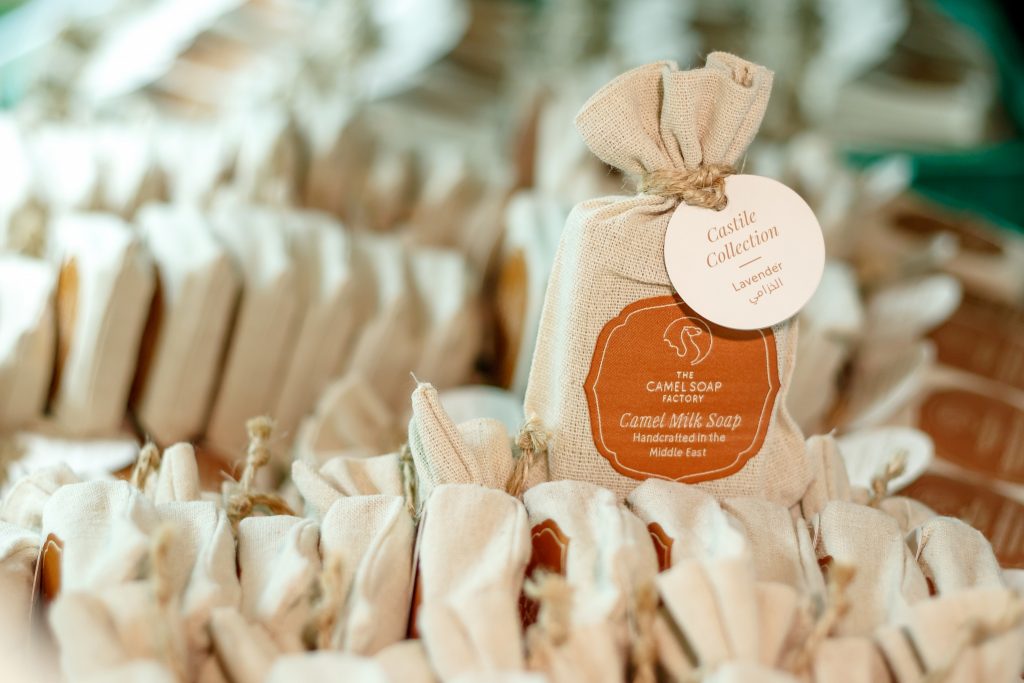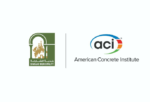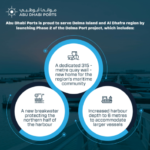Mehak Srivastava speaks to Stevi Lowmass and Dave Esmonde-White of The Camel Soap Factory, discovering the art and their passion behind the handcrafted soaps.
Contented work environments are a rarity slowly getting lost in the corporate rush of Dubai. However, step into The Camel Soap Factory, and you will soon be whistling a happy tune as you swing about in the relaxed ambience, amid scents like lavender and oud. But dont mistake the laidback atmosphere for a simple business; bubbling beneath is a clockwork set of procedures, determined to deliver the perfect product every time. The soaps are handmade by the lot through the cold process, and from their humble beginnings in a home kitchen, have today evolved into the result of a large-scale production line process. Yet, it is all done by hand.

I have always been fascinated with natural soaps, remarks founder and owner, Stevi Lowmass. My daughter has sensitive skin, and it seemed like the right testing ground for creating natural soaps. I thought it would be a nice idea to see if I could try and create something that utilised the local ingredients and I thought camel milk would be wonderful.
Deriving their name from the core ingredient, camel milk, the factory today uses up nearly a tonne of fresh milk every week, sourced from Al Ain Dairy farms. The milk is stored in the freezer, with batches taken out as per the production requirements. Other key ingredients include lye, olive oil, shea butter, and essential aromatic oils.

Lowmass began selling small batches of the soaps in 2012, starting out from a Christmas market where sales exceeded expectations. It was then that she decided to get into licensed trade and to launch a dedicated soap making factory.
We firstly got a general trade license, followed by an industrial license in 2014. Our growth has been pretty phenomenal since then, and weve doubled in size every year. Our USP is all about Dubaiwe love Dubai, we love the country. I really wanted to create a product that reflected a little bit of the UAE, so that tourists could buy something that was not only useful, but also beautiful and gave them something of the UAE to take back. Weve never looked at manufacturing elsewhere. For us, Dubai is what makes us special.
On being queried as to why camel milk was chosen as the primary ingredient, Lowmass highlights that the resulting properties of the milk make them highly favourable amongst customers.

Milk soaps are gorgeous. Traditionally, people use goat milk, or even donkey milk. There is a different molecular structure to cows milk. I always thought camel milk would be really interesting to try. Its an absolutely lovely product and we get a lot of [positive] feedback from people telling us how much they love it on their skin.
While the milk was initially sourced from Camelicious, a renowned camel milk dairy brand based in Dubai, Lowmass decided to shift to Al Ain Dairy once production requirements grew. Lowmass highlights how on a visit to the farms, she came face to face with happy, pampered camels, which she believes trickles down to the quality of milk they produce.

Lowmass emphasises that the soap-making process is indeed quite simple once all the ingredients are in place. Several of the other ingredients are sourced from outside Dubaifor instance, the olive oil comes in from Spain, while the shea butter is from Africa.
We try and source the ingredients from as close to Dubai as possible, remarks Dave Esmonde-White, marketing manager. It could be from within the UAE or GCC or the Middle East, or in the case of the olive oil, the Mediterranean. We have tried to be cognizant of the fact that we are in the Middle East and we have been experimenting and testing products that have unique ingredients, such as the camel milk, but also other local ingredients.
The production equipment was previously brought in from the UK from a specialist manufacturer, but Lowmass mentions that recently they were able to find local companies that made the equipment as per specifications.

Lowmass adds: We buy really high-quality olive oils, shea butter, coconut oileverything we use is edible. We dont use anything low quality or low grade. The next step is to mix the liquids, including the camel milk, with a catalyst. We use sodium hydroxide or lye, which leads to a chemical change in the oil to become soap. Its as simple as that, and you can see the reaction take place in front of your eyes.
The inner workings of the factory reveal exactly that. Workers in overalls, gloves, hairnets, and respirators (just a precautionary measure, since they breathe in any emitted gases all day, points out White) bustle around the production space. While a few clean and set up the box-shaped casts for pouring in the soap, another set works on lining the moulds with parchment paper and grease the insides with coconut oil. The production manager gets busy heating the oils on a burner in open pots, allowing solid oils like shea butter time to gently melt, but not enough to boil them.

The lye solution, on the other hand, is mixed with the camel milk in the lye tanks and then the appropriate quantity is decanted into the mixing vats with the oils, in a process known as saponification. Essential oils are added, depending on the requirements of the batch. The resulting liquid is poured into the moulds and set aside for cooling. Once cooled and solidified, the soaps are hand-cut into bars using a specialised cutter, packed into plastic crates, and placed in a ventilated space for curing. This part of the soap making process is the one that takes the longestnearly four to six weeks, which is why customised orders have to be placed well in advance.
This week alone we made 50 batches, remarks White. Which is approximately 16,000 bars of soaparound 160 tonnes. Any excessive remains of the soap, for instance shavings or offcuts post the cutting process, are boxed and later used to make specialised, exfoliating soapsnearly no waste is produced when it comes to the soap itself. The company has also expanded its product range to include moisturisers and lip balms, all containing camel milk.
The soap is hand-stamped with the company logo (around two weeks into the curing stage). Post curing, the finished soaps are painstakingly hand-packaged, first with shrink-wrap, to protect them from elements, and then into the brands signature jute packs. Great attention is paid to how the soaps are packed, and these are then segregated into boxes of 50, which go into boxes of 300 for export.

A long time ago, when I first entered the market with my soaps, I would pack them in beautiful tissue paper, with a little label on top, reminisces Lowmass. I went to sell the soaps at a market at a school, and somebody accidentally set the sprinkler system off, and I lost all my stock that night. It wasnt a lot [of stock] as compared to what I make today, but I was heartbroken all the same because it was everything that I had made. Thats when I realised that I need to change my packaging and I wanted to get packaging that I thought reflected the brand.
I came across the jute bags from a supplierwho is still one of our biggest suppliers. Theyve been supplying me for over five years now. The bag has evolved. When I started off, it was unprinted and had a square label. We then moved to a printed bag with a square label, and we discovered that the labels often bent during retail sale. We decided to shift to smaller, round labels, which stay more intact. Weve just moved to an embroidered badge on the back. So, it still looks very beautiful and very natural, but also so much more classy now.
The company utilises both their own delivery fleet as well as fetchr, DHL, and other freight forwarders for deliveries.
If we have lots of small orders, we outsource that to companies locally, notes Lowmass. For the really big ones, which are meant for our retailers, we deliver those. If we have to ship overseas, we have freight forwarding partners.

Lowmass takes great pride in her employees and points out that theyve hardly had anyone leave.
We have the best team. I take people because I like them and because I feel their work ethic matches what we are. And then, they learn. Theyve all trained on the job. Apart from my head of production, who obviously has vast experience in this field, and Dave here has a lot of experience in marketing, the others especially in the production areawe bring in people who we can train to do things our way. We are GMP certified, which is an ISO standard, which means you have to have clearly documented processes.
Lowmass trained with master soap maker Melinda Coss in London, the author of The Handmade Soap Book, and she subsequently trained her team in the ways of soap making. She points out that there isnt really a school or university to hone the art of soap making.

White adds: Its a bit like cooking. You measure your ingredients, you ensure you use quality ingredients, and its the same with making soap. We ensure we source the best ingredients and move according to a recipe. Its stunningly simple.
Soap is almost 4000 years old and is not rocket science. Some people just have a feel for what measurements or what ingredients might work somewhere. Just like cooking!
Camel Soap Factory offers customised soaps for wedding and corporate gifts and for hotels, with specific branding. Ever since demand for the product has picked up, the company is focusing more on ready-to-go soaps, with custom orders reserved for older clients.
The company sells its products through market partners and online portals, and has not launched its own brick-and-mortar store yet. Lowmass is quick to point out that they are not too keen on the idea.
Were manufacturers and we sell to whole-sellers and distributors. Were good at making soap, and the people we sell to are good at selling it further. Setting up a store would prove quite expensive for us, and possibly quite fatal.

Lowmass is keen on entering the Saudi market, including possibly setting up a manufacturing facility in the thriving nation, which would translate into a major leap for the brand. She is also keen on expanding business in China, plus to continue doing good trade in countries like Thailand and Sweden.
Were aggressively looking at Saudi and China, and we are relying to grow organically in our existing markets, says White. We have certain manufacturing capabilities at the moment and we need to manage that kind of growth. We cant over promise and under-deliver.
For now, things remain busy at Camel Soap Factory and demand continues to rise. It is interesting to note how a home-grown brand has created a strong position for itself, not just as an organic product, but as a way of life. Talks of a bigger factory space emerge during our conversation, but one thing is apparent no matter the scale of the business, the soaps will continue to bear the loving, hand-touched warmth of the soap makers.
Camel milk is considered closest to a human mothers milk. As a cosmetic ingredient, it is considered as a natural source of alpha-hydroxy acids, which help keep skin supple and reportedly prevent wrinkles and other anti-ageing signs. Vitamin A stimulates cell turnover, while Vitamin C, a natural anti-oxidant, increases collagen production and improves skin resiliency. Vitamin E protects the skin against cell mutation in the sun and pollution. Camel Milk is a natural source of essential fatty acid linoleic, known for moisture retention. The deeply moisturising lanolin in camels milk provides a calming and soothing effect and is beneficial for all skin types, including the most delicate and sensitive ones.














